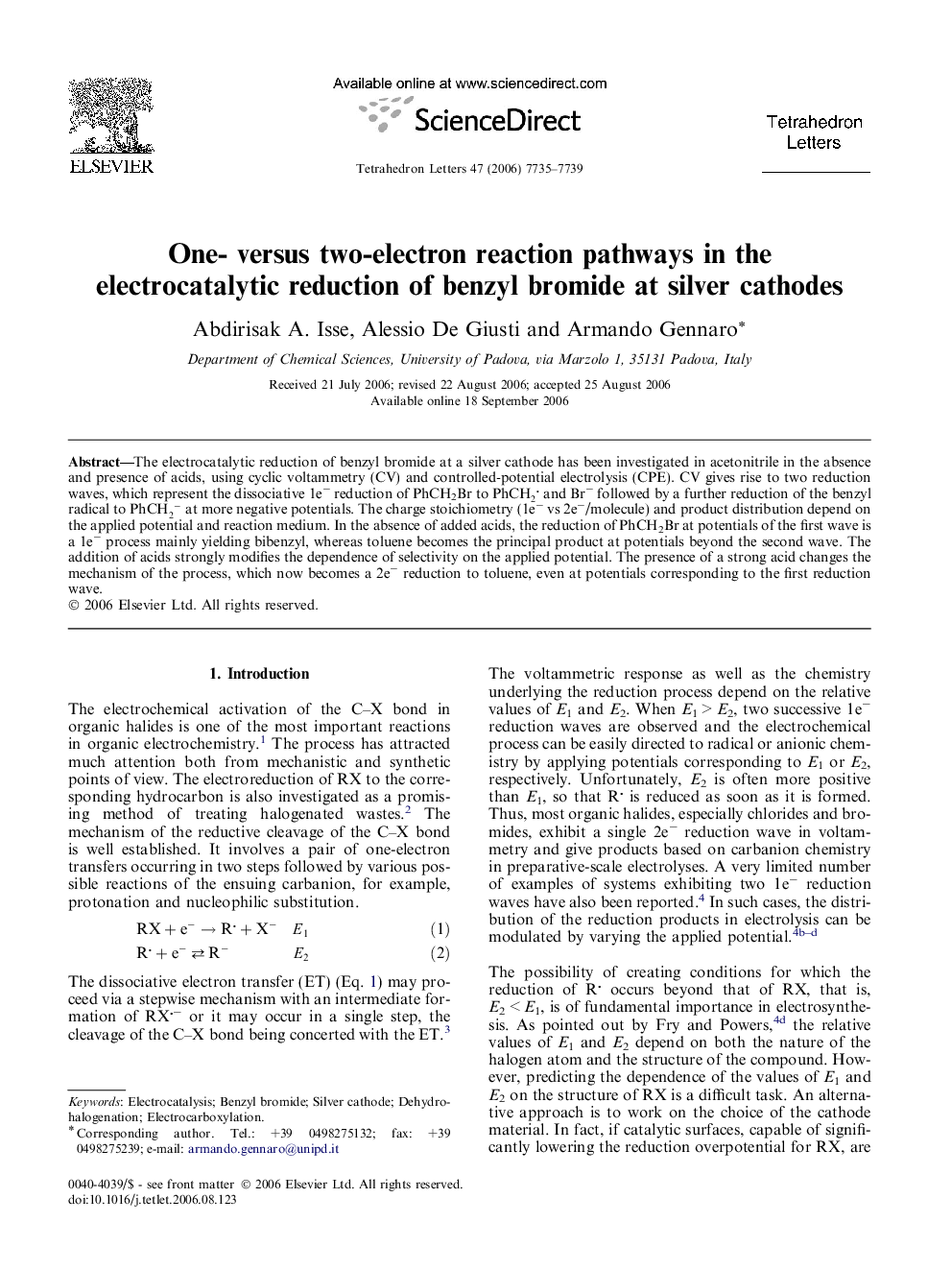| Article ID | Journal | Published Year | Pages | File Type |
|---|---|---|---|---|
| 5288564 | Tetrahedron Letters | 2006 | 5 Pages |
Abstract
The electrocatalytic reduction of benzyl bromide at a silver cathode has been investigated in acetonitrile in the absence and presence of acids, using cyclic voltammetry (CV) and controlled-potential electrolysis (CPE). CV gives rise to two reduction waves, which represent the dissociative 1eâ reduction of PhCH2Br to PhCH2 and Brâ followed by a further reduction of the benzyl radical to PhCH2- at more negative potentials. The charge stoichiometry (1eâ vs 2eâ/molecule) and product distribution depend on the applied potential and reaction medium. In the absence of added acids, the reduction of PhCH2Br at potentials of the first wave is a 1eâ process mainly yielding bibenzyl, whereas toluene becomes the principal product at potentials beyond the second wave. The addition of acids strongly modifies the dependence of selectivity on the applied potential. The presence of a strong acid changes the mechanism of the process, which now becomes a 2eâ reduction to toluene, even at potentials corresponding to the first reduction wave.
Related Topics
Physical Sciences and Engineering
Chemistry
Organic Chemistry
Authors
Abdirisak A. Isse, Alessio De Giusti, Armando Gennaro,
